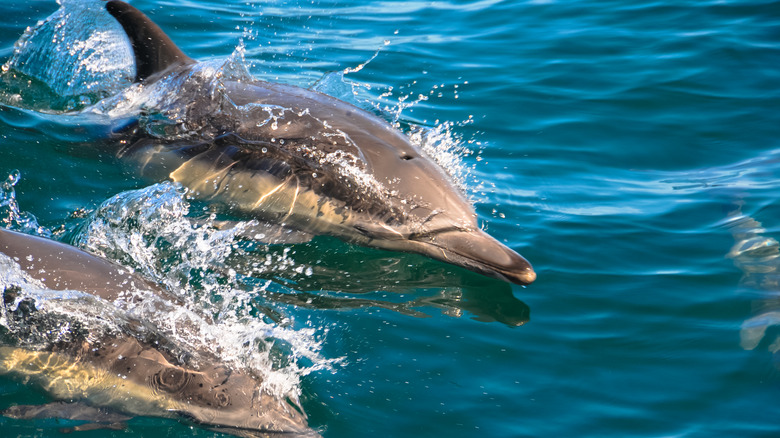Spotting wildlife at Julia Pfeiffer Burns State Park
The Overlook Trail is an extremely popular destination for park visitors. The short, out-and-back hike leads to an observation point overlooking McWay Falls, an iconic park feature. McWay Falls is an 80-foot tidepool that directly flows into the waters of the Monterey Bay National Marine Sanctuary, which protects over 6,000 square miles of ocean off the California coast. The sanctuary is often called the “Serengeti of the Sea,” because it is home to at least 30 species of marine mammals. From the overlook, you can observe seals, various species of dolphins, and whales that frequent the waters. If lucky, you may even spot an endangered sea otter.
After trekking along the Pacific coastline, head inland to search for even more wildlife. The Ewoldsen Trail loop is a five mile-long, challenging route that weaves through massive redwoods and scrublands. Here, nature lovers can admire Big Sur natives, including black-tailed deer, wild turkeys, and even the illusive bobcat on occasion. Birdwatchers can rejoice, as the park is an ideal place to catch a glimpse of feathered friends, including bald eagles and California brown pelicans. Interestingly, the park’s coastal canyons house one of the last remaining Smith’s blue butterfly colonies across the entire globe. For both ocean and forest views, embark on the Tanbark Trail and Tin House Loop. You’ll first pass through redwood and oak forests that run parallel to a creek, eventually making your way to a coastal ridge with panoramic vistas.
Diving with marine life

While there is no beach access at McWay Falls, the state park features the Julia Pfeiffer Burns Underwater Area for Jacques Cousteau-inspired explorers. Located between Partington Point and McWay Creek in the northern section of the park, this advanced diving spot is an excellent place to observe underwater marine life. From kelp forests to underwater canyons, the rich ocean ecosystems of the Monterey Bay National Marine Sanctuary not only allows marine mammals to thrive, but it also provides a habitat for over 180 species of shoreline and seabirds, and 525 unique species of fish. The mile-long, out-and-back Partington Cove Trail will lead you to this rugged, secluded inlet. Before submerging yourself in the salty waters of the Julia Pfeiffer Burns Underwater Area, you must obtain a dive registration permit, as well as a valid scuba certification card.
When planning your West Coast wildlife adventure, be sure to check the California Department of Parks and Recreation’s website for any trail closures or weather-related warnings; the park is susceptible to wildfires and landslides. To transform your nature-filled trip into a multi-day excursion, you can book a reservation to stay at one of the park’s two environmental campsites. At Julia Pfeiffer Burns State Park, you’ll wake to the sounds of bustling California wildlife and crashing Pacific waves.

